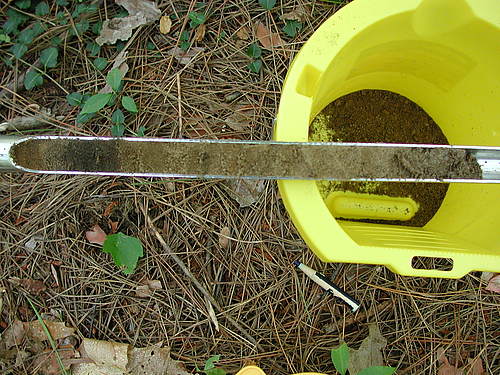In 2010, Kalamazoo College signed the Sustainability and Climate Action Plan, committing the college to reduce the college’s environmental footprint. A crucial part of reducing that footprint is the sequestration of green house gasses, specifically carbon. Carbon sequestration is the removal of greenhouse gasses from the atmosphere and storing it in a reservoir. Put more simply, carbon sequestration is carbon capture and storage. The carbon sequestration project aims to measure the amount of carbon the Arboretum sequesters annually.
Land History
In 1890, the land the college’s Lillian Anderson Arboretum now occupies was established as a homestead and farmed. In the mid 1940’s, this land was abandoned and the process of reforestation allowed to begin (Cooper 2009). During the period when the Arboretum was farmed, its carbon reserves were depleted. Now that it has been able to regrow, organisms from trees to microbes have been accumulating stored carbon. The carbon sequestration project aims to measure the rate at which carbon is taken from the atmosphere and stored. For the purposes of measurement, carbon sequestration is broken down into four categories; trees, soil, forest floor, and understory growth. At this point in the project, we have created a baseline measurement of the total carbon found in the soils and in the tree biomass of the Lillian Anderson Arboretum.
At K college
In 2009 Benjamin Cooper (K 2010) and Ellen Smith (K 2011) created a baseline measurement of the biomass in the trees and created a procedure for future measurements to be compared to the baseline. Within forested areas, Cooper and Smith established 35 permanent circular plots, each 40 meters in diameter and measured the diameter of the trees at breast height (1.4 meters). They used these measurements to extrapolate the carbon stored in the above ground biomass, and provided estimates for carbon in the soil, forest floor, and undergrowth.

The following year, Trace Redmond (K 2013) created a baseline measurement of the carbon stored in the arboretum’s soil. Redmond took at least twenty soil samples in each land cover area (pines, prairie, hardwoods etc.) to a depth of 30 cm using a soil corer. He then measured carbon content of the samples, using these values to extrapolate the carbon stored in the soil of the arboretum.
Results
As of 2010, we estimated the Lillian Anderson Arboretum at 9,838.52 Mg Carbon. This figure includes the measurements of 5,952.38 Mg (mega-gram or metric ton) stored in the trees and 3003.50 Mg in the soil, as well as the estimates of the understory and forest floor at 99.40 Mg and 783.24 Mg, respectively.
A measurement of the carbon stored in the trees and the carbon stored in the soil will need to be conducted every five years and compared to the established baseline (original measurement). Then we will be able to determine how much carbon the arboretum is sequestering (taking in) annually, and use that sequestered carbon to offset the College’s emissions.
Future work
To further the accuracy of the total carbon stored in the arboretum, a baseline measurement should be made of both the carbon stored in the forest floor and the understory. A study that compares the organic carbon sequestration of the on campus soil to that of the arboretum could be used to manage the on campus soil to closely match the soil in the arboretum.
